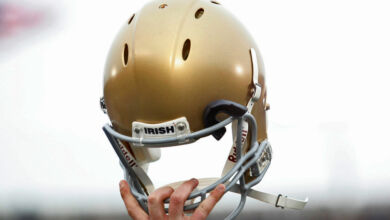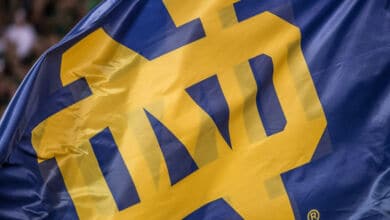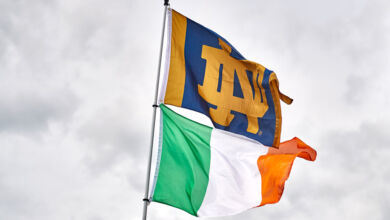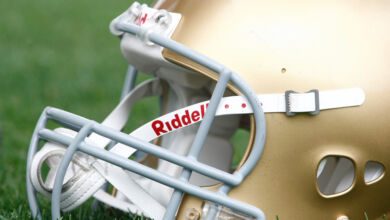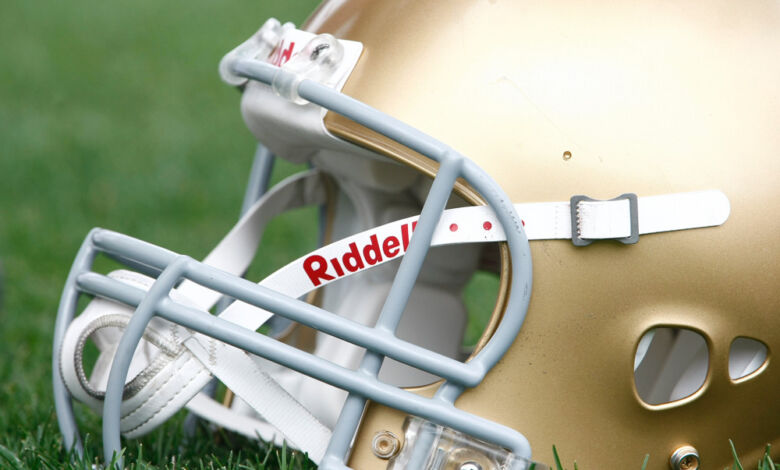
On the final day of 1973, the Notre Dame Fighting Irish and Alabama Crimson Tide battled it out in the Sugar Bowl for the national championship. The clash between the undefeated schools had echoes of another battle seven years earlier. In that instance, Notre Dame tied Michigan State and managed to win the title despite Alabama’s undefeated record.
The game marked the first-ever meeting between the legendary college football powerhouses. Both teams brought potent offenses and strong defenses to the contest. Ultimately, Notre Dame emerged with a tight 24-23 win, winning its ninth national championship as well as the second and final one under the leadership of legendary head coach Ara Parseghian.
The Coaches: Two Legends Square Off
Parseghian was in his 10th season as head coach of the Irish, a milestone that was highlighted by a comeback from a disappointing 8-3 season the year before. That 1972 effort resulted in Notre Dame getting matched up in the Orange Bowl, where they were battered by Nebraska, 40-6.
The legendary Bear Bryant was in his 16th season at Alabama, having led the Tide to three national titles during that span. Following Alabama’s near-miss at another championship in 1966, Bryant’s teams struggled for the next four seasons before roaring back. Beginning in 1971, the Tide had won 32 of their 35 games entering their matchup against the Irish.
The Key Players: Running Back Trios Powers Irish Offense
Tom Clements was in his second season at quarterback for Notre Dame and delivered modest numbers with the team’s passing game. His main options were wide receiver Pete Demmerle and tight end Dave Casper, who combined for 39 catches during the regular season. However, the driving force for the Irish on offense was their running game, with the triumvirate of Wayne Bullock, Art Best and Eric Penick combining for nearly 1,900 yards during the first 10 games. Clements also contributed to this department, an effort that would be important in this contest.
Alabama’s 1971 resurgence was sparked by Bryant’s adoption of the Wishbone offense, which made the team’s running game the dominant aspect of that unit. Quarterbacks Gary Rutledge and Richard Todd handed off to an array of running backs, led by Wilbur Jackson. The signal-calling duo also made use of their legs, with Todd rushing for over 500 yards during the Tide’s 1973 regular season.
The Game: Irish Hold On Late for Dramatic Win
- Notre Dame opened the scoring with a 64-yard drive, leading 6-0 after a failed conversion.
- Alabama briefly led 7-6, but Al Hunter’s 93-yard kickoff return and a two-point conversion put Notre Dame ahead 14-7.
- Alabama reclaimed the lead 17-14 in the third quarter after a 93-yard drive.
- Notre Dame responded with a touchdown and a field goal, leading 24-23 with 4:26 left.
- A crucial 35-yard pass from Clements to Robin Weber helped Notre Dame secure the win and the national championship.
The nighttime clash at Tulane Stadium was played on a slick carpet after afternoon rains but it didn’t stop the Irish from notching the first score of the game. That came in the latter part of the opening quarter when they drove 64 yards on seven plays, with 59 of those yards coming on Clements’ completions to Demmerle. Bullock plunged in from the Alabama one to make it 6-0 but a high snap and bobble on the conversion attempt kept the margin at six.
In the second quarter, after each team fumbled the ball away, the Tide moved 52 yards for their first score and a 7-6 advantage. That lead was brief after Al Hunter hauled in the ensuing kickoff and took it to the house on a 93-yard return. The distance marked a new Sugar Bowl record, erasing the 85-yard return in the inaugural clash in 1935. Clements and Deemerle hooked up again on a two-point conversion to make it 14-7, with Alabama adding a field goal before the half ended.
The Tide started play after the break at their own seven and marched 93 yards on 11 plays to take back the lead. The drive was aided by a costly personal foul call on Irish defensive back Tim Rudnick, who took a swing at Alabama receiver Wayne Wheeler.
After each team then missed a field goal try, Notre Dame got the lead back. Todd lost the ball and Irish linebacker Drew Mahalic caught it in mid-air before returning it to the Tide 12. Penick wasted no time, going that distance on the first play to make it 21-17 in favor of the Irish.
Two Notre Dame fumbles were then sandwiched around an Alabama interception. The second Irish mistake allowed Alabama to pick up a first down before facing a third-and-seven at the Irish 25. Todd pitched to Mike Stock, who then threw the ball back to Todd for the touchdown on a halfback option to make it 23-21. In what became a crucial play, Tide kicker Bill Davis missed the extra point attempt with 9:39 to go.
Notre Dame started its next drive with a pair of first downs but then found itself in a third-and-one situation at the Alabama 45. Instead of trying a safer run to try and move the chains, Clements looked downfield and found Casper at the Tide 15. After another first down got it to the four-yard-line, the drive stalled and Bob Thomas booted a 19-yard field goal with 4:26 left.
The Irish forced a quick three-and-out, with freshman Ross Browner hauling down Rutledge at the Bama 30 on third down. Yet, Notre Dame’s decision to let the subsequent punt roll backfired when it pinned the Irish back on their one-yard-line. The Tide also made a questionable call when they declined a roughing the kicker on Browner all with three minutes remaining.
After two running plays gained five yards, a false start for the Irish moved it back to the Notre Dame three. Clements then threw 35 yards to wide receiver Robin Weber for what turned out to be one of the biggest plays in the Irish’s storied history. Before that grab, Weber had just one college catch to his credit. After two more minutes of clock ran down, the Irish were again national champions.
The Aftermath: Notre Dame Captures 9th National Championship
Ohio State made an effort to try and campaign for the national title after they routed Notre Dame’s arch-rival, Southern Cal, 42-21, in the Rose Bowl. However, their 10-10 tie against Michigan in the regular season finale ultimately relegated them to second place in the final balloting.
Parseghian would coach the Irish for only one more season before announcing his retirement. The relentless stress of coaching at the football program with the highest profile had taken a toll on his health, with family concerns and off-the-field issues also playing a part in his decision.
Since that 1973 meeting, the Irish and the Tide have met seven more times. Only the 2012 BCS Championship Game, a 42-14 victory for Alabama has come close to the drama of that first meeting. Given the final result, it certainly pales in comparison when it comes to the back-and-forth battle on New Year’s Eve 1973.
